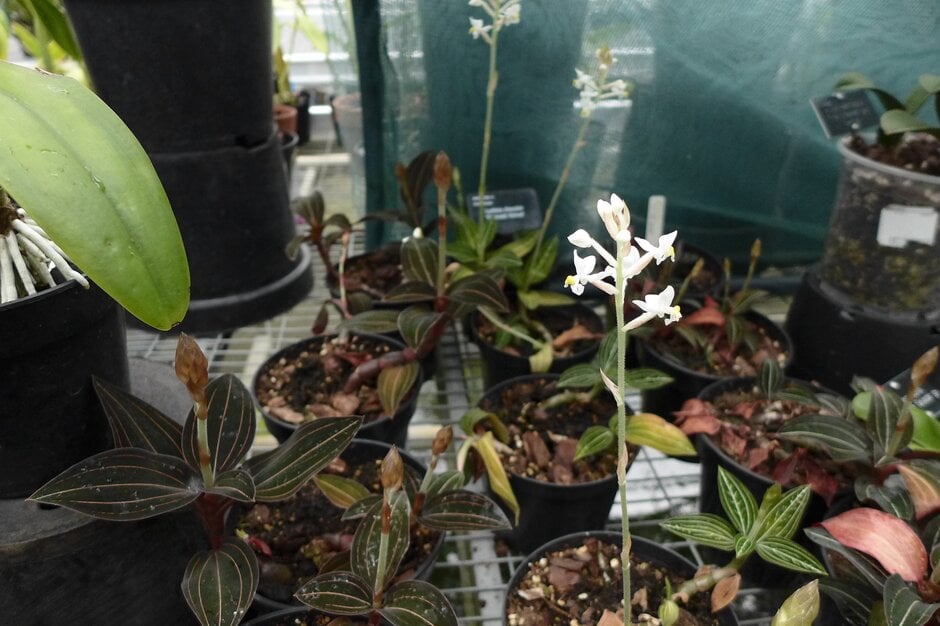Ludisia discolor
black jewel orchid
A terrestrial orchid with a creeping rhizome and velvety, dark purple-brown leaves, 4-7cm long with red or gold veins; flowers to 2cm long are borne on an 8cm stem and are white with a yellow lip
Size
Ultimate height
0.1–0.5 metresTime to ultimate height
2–5 yearsUltimate spread
0.1–0.5 metresGrowing conditions
Moisture
Well–drainedpH
NeutralColour & scent
| Stem | Flower | Foliage | Fruit | |
| Spring | Green | White | Gold Purple Red | |
|---|---|---|---|---|
| Summer | ||||
| Autumn | ||||
| Winter |
Position
- Partial shade
Aspect
North–facing
Exposure
Sheltered Hardiness
H1ABotanical details
- Family
- Orchidaceae
- Native to GB / Ireland
- No
- Foliage
- Evergreen
- Habit
- Columnar upright
- Genus
Ludisia is one of a small group of terrestrial orchids grown for their ornamental leaves rather than their flowers
- Name status
Correct
- Plant range
- Himalaya to Java
How to grow
Cultivation
Grow in a shallow pot, in an airy position with good humidity. Grows best in houseplant compost or a mixture of medium to coarse bark with a small amount of sphagnum moss. Allow the compost to dry out between waterings and feed frequently with orchid fertiliser. See Orchids: indoor cultivation for further information
Propagation
Plant the fleshy stems that break off in sphagnum moss until roots form - approximately 6 weeks, cuttings can then be potted up into houseplant compost after about 6 months
Suggested planting locations and garden types
- Houseplants
- Conservatory and greenhouse
Pruning
Cut back flower stems when the flowers die
Pests
May be susceptible to aphids, glasshouse red spider mite and mealybugs
Diseases
Generally disease-free
Get involved
The Royal Horticultural Society is the UK’s leading gardening charity. We aim to enrich everyone’s life through plants, and make the UK a greener and more beautiful place.
